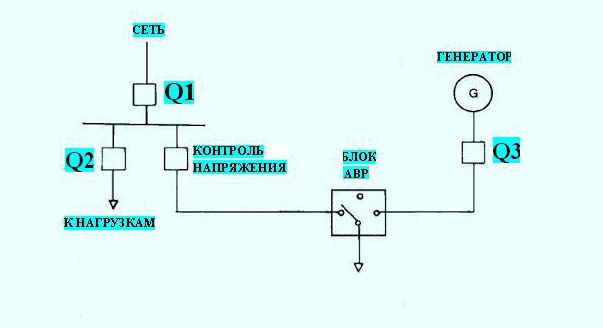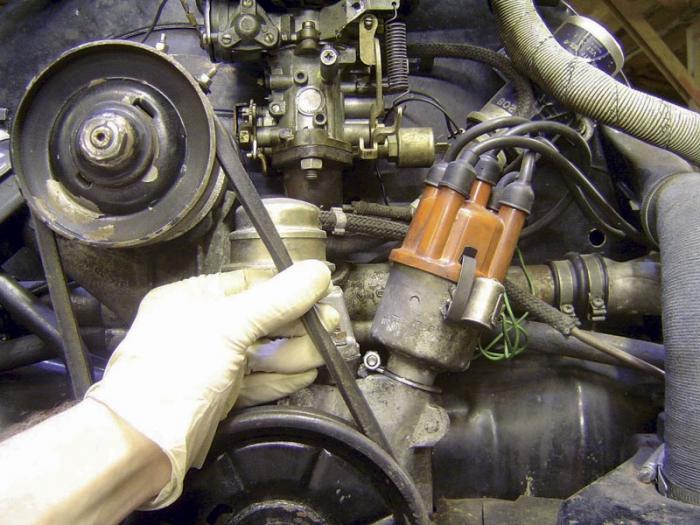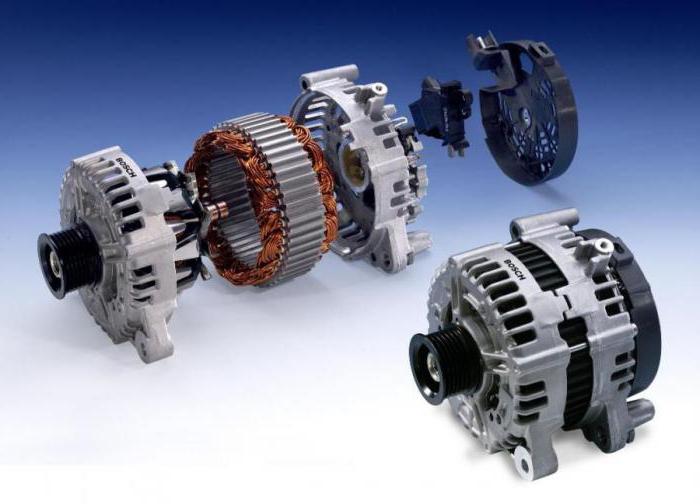The ATS scheme. ATS (automatic reserve input) for the generator
In the normal mode of power supply, the energyis provided by the power company and is brought to the place of its use. When its main source ceases to function, the power from the second network input or the backup generator used must be manually or automatically supplied to the loads, for which the automatic transfer scheme (ATS) serves. Its main task is the redistribution of power from the power system to a backup power source.
III category of power supply reliability
As is known, power supply companies divideall their customers, i.e. those persons (legal and physical) with whom they contract for the supply of electricity, into three categories by the degree of reliability of electricity supply. The lowest reliability in the third category. Such a power customer is provided with only one three-phase voltage input of 6 or 10 kV (sometimes 400 V) or a single-phase 230 V input from one supply substation, but the cost of connecting loads to the network in this category is minimal - it is enough to install a simple single-transform KTP and connect it with the nearest overhead transmission line.
Do I need an ATS scheme for the III category?
PUE allows the possibility of power supply in this way,if the power industry guarantees the restoration of food after the accidents for not more than a day. And if it is not so? Then you need a backup power source, which is usually a benzo electric aggregate or diesel generator. In earlier times, consumers manually connected their loads to them and started them to work. But as the automation of these products developed, it became possible to perform their launch without human intervention.

And once you can start a diesel generatorautomatically, then exactly the same way you can connect the consumer loads to it. So there was a modern concept of dual-input AVR, the electric circuit of which, shown below, is already becoming the standard of power supply for a private house.

II category: does she need an ATS
If the customer orders two network inputspower supply, it goes into the next category - the second. In this case, energy, as a rule, requires customers to pay for the construction of a two-transformer substation. In its simplest form, it contains two bus sections (these are simply aluminum or at best copper strips) of high voltage with their input switches, to each of which only one of the high voltage inputs (6 or 10 kV) is connected. Between the sections is located the so-called sectional switch. If it is open, then each high-voltage input can feed only one transformer (usually only one of the two is in operation, the second is in reserve - and this is also a typical requirement of power engineers). If the voltage drops out at one of the inputs, the customer's electrician can manually switch on the sectional switch and apply a load to the permanently operating transformer from another high-voltage input.
Such consumers, in fact, do not needpresence of ATS. However, in the last decade, energy companies often suggest that they install them in typical two-transformer substations on the low-voltage side. Such an ABP shield has two inputs from the low-voltage windings of different transformers (they both must be energized, but only one of them is loaded at any one time) and one output to low-voltage buses to which all loads are connected.

Category I - AVR Required
But if the consumer is not satisfied in principleIf the time delay for manual switching of inputs, then he is obliged to apply the ATS without fail and move to the next category of power supply reliability - the first. In the simplest version, the circuit diagram of the ATS may contain two inputs from the same two sections of high-voltage substation tires and a unit for switching on a sectional switch (usually vacuum). If the voltage disappears at the power input, then the automatics disconnects its input switch and turns on the sectional one. After that, the combined bus voltage comes from the second input. AVR on two inputs in this case can be performed on the low voltage side of the substation, as described above.
But among the consumers of the first category, the OLC distinguishescalled a special group, in which two network power supply inputs are not enough, but a third backup input is usually needed, usually performed from a diesel generator. In this case, the ABP is required for 3 inputs. The circuit is performed at low voltage.
How does the device ABP with generator input
Recently a lot has appeared on the market.automatic backup devices with a microprocessor control controller. In this regard, control relays of the Easy series manufactured by Moeller are very popular. Analyzing the signals of the voltage sensors, the microcontroller detects a power failure and initiates the procedure for starting the generator engine (usually synchronous). As soon as it reaches the rated voltage and frequency, the control system switches the loads of the consumer to power from it. From the point of view of electrical engineering, the circuitry of ATS for responsible and powerful loads is a rather difficult task, since the inevitable time delays and other technical difficulties make it difficult to instantly receive backup power.

Frequency and voltage monitoring
One of the main functions of the device AVR isdetection of voltage drop or complete disappearance of the main power source. As a rule, all phases of the supply network are controlled on the side by means of a minimum voltage relay (phase control relay). The point of failure is determined by the voltage drop below the minimum acceptable level at any of the phases. Information about voltage and frequency is transmitted to the switchboard AVR, where the possibility of continuing to supply the loads is determined. The permissible minimum voltage and frequency must necessarily be overcome before switching loads to power from a backup generator, the power of which must provide it.

Basic time delay
The ABP scheme usually has the ability to broadadjust the delay time of its operation. This is a necessary function for the possibility of stopping unjustified disconnections from the main power supply sources in case of short-term violations. The most prevailing time delay overlaps any short-term outages so as not to cause unnecessary start-ups of the drive motors of the generators and switching loads to them. This delay is in the range from 0 to 6 seconds, with one second being the most common option. It should be short, but sufficient to connect consumer loads to backup power sources. Many companies today buy powerful uninterruptible power supplies with rechargeable batteries, which ensure the minimum connection delay time.
Additional time delays
After the restoration of the main power, someA time delay is required to ensure sufficient load stability to disconnect it from the backup power supply. As a rule, it ranges from zero to thirty minutes. AVR for the generator should automatically bypass this time delay in returning to the main source if the backup fails and the main one is working normally again.
The third most common time delay includes the cooling period of the engine. Over its length, the diesel generator control system controls the unloaded engine until it stops.
In most cases, it is usually desirable.switch loads to the standby generator as soon as the appropriate voltage levels and frequencies are reached. However, in some situations, end users want switching sequences for different loads on a backup generator. When this is required, several AVR circuits are performed for the generator, triggered with individual time delays, so that the loads can be connected to the generator in any desired order.
Executive devices of input reserve schemes
The end result of the work under considerationclass of devices is the switching of electrical circuits, switching them from the main input to the backup. As noted above, in electric substations the circuit breaker circuit can be implemented both on the high and low voltage side. In the first case, its executive elements are regular high-voltage switches. In the second case, which includes switching loads on the generator input, switching is carried out by low-voltage devices.
They can either be part of the shield equipment.(panels) ATS, or may be external to it and form part of the general power supply circuit of loads. In the first case, it is possible to use magnetic starters - it is used in backup devices for non-industrial consumers with a power of their loads up to several tens of kW. At higher powers, AVR is used on contactors. The principle scheme of the device in both cases is the same.
External low voltage input circuit devicesreserve are power circuit breakers with electromagnetic drives. The function of the ABP device itself is reduced in this case to the formation and issue of the corresponding on / off signals on them.

Typical block AVR 3 input. Scheme and algorithm of work
It is designed to implement continuoussupplying 0.4 kV loads from three power sources: two three-phase mains inputs and three-phase diesel generator inputs. The executive devices are the regular automatic switches Q1, Q2 and Q3 of each of the inputs, protecting loads of the 1st category of reliability of power supply.

The algorithm of the block is as follows:
1. There is voltage at the main input. Then Q1 is enabled, and Q2 and Q3 are disabled.
2. There is no voltage at the main input, but it is at the backup. Then Q2 is enabled, and Q1 and Q3 are disabled.
3. There is no voltage on the main and backup inputs. Then Q3 is enabled, and Q1 and Q2 are disabled.








